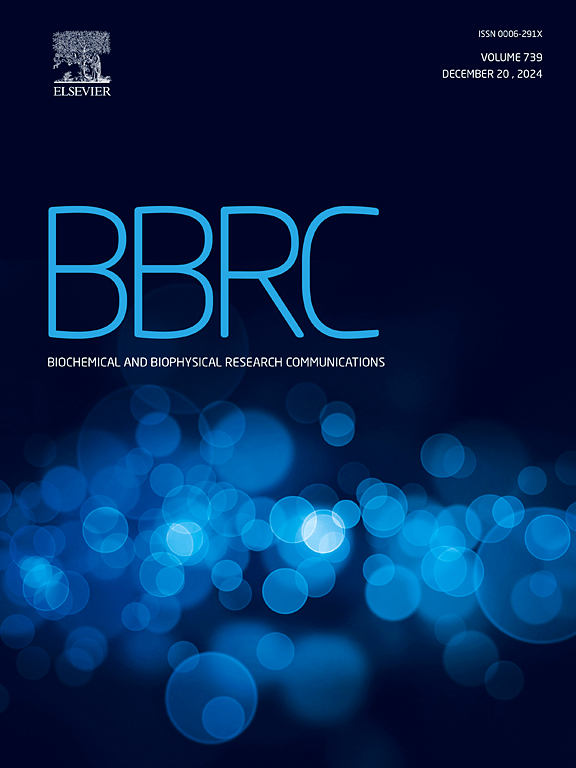Validated target-based network pharmacology reveals that salvianolic acid C attenuates doxorubicin-induced cardiotoxicity by regulating apoptosis and oxidative stress
IF 2.5
3区 生物学
Q3 BIOCHEMISTRY & MOLECULAR BIOLOGY
Biochemical and biophysical research communications
Pub Date : 2025-06-11
DOI:10.1016/j.bbrc.2025.152196
引用次数: 0
Abstract
Doxorubicin (DOX), an anthracycline commonly used to treat various cancers, is associated with irreversible and dose-dependent cardiotoxicity. Salvianolic acid C (SAC) is a major polyphenolic compound in Salvia miltiorrhiza, an herbal medicine with significant cardioprotective effects. However, the role and mechanism of SAC in protecting against DIC remain unreported. Therefore, this study aims to investigate the protective effects and mechanisms of action of SAC against DOX-induced cardiotoxicity (DIC) through validated target-based network pharmacology. In vitro experiments using H9c2 cells revealed that SAC attenuated DOX-induced cardiomyocyte injury. Network pharmacology analysis revealed that apoptosis and oxidative stress play vital roles in mediating the protective effects of SAC against DIC. TUNEL staining and flow cytometry revealed that SAC inhibited DOX-induced apoptosis. Additionally, SAC mitigated DOX-induced oxidative stress by regulating the levels of reactive oxygen species, malondialdehyde, superoxide dismutase, and glutathione. Western blotting analysis revealed that SAC inhibited DOX-induced oxidative stress by reducing JNK phosphorylation, enhancing PI3K-AKT-mTOR pathway activation, and upregulating the antioxidant factors Nrf2 and HO-1. Furthermore, the reduction in cleaved caspase-3 and the increase in the Bcl-2/Bax ratio confirmed the inhibitory effect of SAC on apoptosis. Together, based on validated targets, these findings provide the first elucidation that SAC attenuates DIC by inhibiting apoptosis and oxidative stress through the regulation of the PI3K-AKT/JNK pathway, highlighting its potential for subsequent cotreatment with DOX in clinical applications.
经过验证的基于靶标的网络药理学表明,丹酚酸C通过调节细胞凋亡和氧化应激来减轻阿霉素诱导的心脏毒性
阿霉素(DOX)是一种常用于治疗各种癌症的蒽环类药物,与不可逆和剂量依赖性心脏毒性有关。丹酚酸C (Salvianolic acid C, SAC)是丹参中主要的多酚类化合物,具有显著的心脏保护作用。然而,SAC在预防DIC中的作用和机制尚未报道。因此,本研究旨在通过经过验证的靶点网络药理学,探讨SAC对dox诱导的心脏毒性(DIC)的保护作用及其机制。体外H9c2细胞实验显示,SAC可减轻dox诱导的心肌细胞损伤。网络药理学分析显示,细胞凋亡和氧化应激在SAC对DIC的保护作用中起重要作用。TUNEL染色和流式细胞术显示SAC抑制dox诱导的细胞凋亡。此外,SAC通过调节活性氧、丙二醛、超氧化物歧化酶和谷胱甘肽的水平来减轻dox诱导的氧化应激。Western blotting分析显示,SAC通过降低JNK磷酸化、增强PI3K-AKT-mTOR通路激活、上调抗氧化因子Nrf2和HO-1来抑制dox诱导的氧化应激。此外,cleaved caspase-3的减少和Bcl-2/Bax比值的增加证实了SAC对细胞凋亡的抑制作用。总之,基于已验证的靶点,这些发现首次阐明了SAC通过调节PI3K-AKT/JNK通路抑制细胞凋亡和氧化应激来减轻DIC,突出了其在临床应用中与DOX后续共治疗的潜力。
本文章由计算机程序翻译,如有差异,请以英文原文为准。
求助全文
约1分钟内获得全文
求助全文
来源期刊
CiteScore
6.10
自引率
0.00%
发文量
1400
审稿时长
14 days
期刊介绍:
Biochemical and Biophysical Research Communications is the premier international journal devoted to the very rapid dissemination of timely and significant experimental results in diverse fields of biological research. The development of the "Breakthroughs and Views" section brings the minireview format to the journal, and issues often contain collections of special interest manuscripts. BBRC is published weekly (52 issues/year).Research Areas now include: Biochemistry; biophysics; cell biology; developmental biology; immunology
; molecular biology; neurobiology; plant biology and proteomics

 求助内容:
求助内容: 应助结果提醒方式:
应助结果提醒方式:


